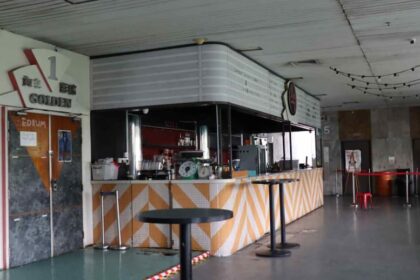What is driving a split market in Malaysia in 2025?
Malaysia’s property market is moving in two speeds as 2025 reaches its midpoint. Official data show that sales volume has softened, yet prices are holding up. The National Property Information Centre reports 196,232 transactions in the first half of 2025, down 1.3 percent from a year earlier, while the total value edged up 1.9 percent to about RM107.7 billion. The headline figures conceal wide regional gaps. Johor and Penang are gaining momentum, helped by fresh industrial investment and buyers linked to Singapore, while Kuala Lumpur is weighed down by a large stock of unsold high rise homes.
- What is driving a split market in Malaysia in 2025?
- Johor surges on cross border demand and an industrial upswing
- Penang holds steady with electronics and new transport plans
- Kuala Lumpur cools in the mass condo market, but offices and retail improve
- Prices, lending and affordability
- Investor calculus, rental yields and taxes
- What to watch in the second half of 2025
- The Essentials
That divergence is visible across segments. Industrial and logistics real estate has become the star performer, backed by a wave of data center developments and the country’s role as a manufacturing and trade hub. Offices and retail in the capital are stabilising with improving occupancy and a pipeline of new, higher quality space. Residential is more nuanced. Demand for landed homes remains steady in many states, yet big city condominiums face a slower sales cycle.
Market analysts use the term overhang to describe completed units that remain unsold for nine months or more after launch. That stock ties up developer capital, drags on new launches, and puts pressure on pricing in affected submarkets. Napic records 26,911 completed unsold residential units in the latest reading, with an estimated value of RM16.44 billion. Apartments and condominiums account for about 58 percent of the total. The year 2024 saw a fall in the national overhang, then inventories ticked up again in early 2025 as project completions met a slower buying pace in selected urban locations.
Even with that drag, prices have not cracked. Terraced and semi detached homes continue to change hands at steady rates, secondary market activity dominates transactions, and new launches have slowed as developers recalibrate toward what buyers can afford. Those shifts help explain why the slowdown is uneven rather than broad based.
Johor surges on cross border demand and an industrial upswing
In Johor, momentum is hard to miss. Napic data and industry trackers show the southern state led new residential launches in the first half of the year and drew rising investment into factories, logistics parks and development land. Knight Frank reports that Johor’s residential transaction value rose about 14 percent in the first quarter of 2025. Two policy anchors are shaping the outlook. The Johor Singapore Special Economic Zone promises faster trade and investment flows, and the cross border Rapid Transit System linking Johor Bahru to Woodlands in Singapore is targeted to open in 2026. Together, they make daily commuting easier and raise the appeal of housing, offices and industrial assets on the Malaysian side of the Causeway.
Singapore spillover and the RTS link
Price gaps between Singapore and Johor remain wide, so Singapore based buyers and tenants often look across the border for better value. A stronger transport link encourages that pattern. For Johor residents who work in Singapore, the rail connection offers more predictable travel times and lower commuting costs compared to today’s road crossings. The result is a broader buyer base for homes close to the RTS stations, stronger rental demand in established suburbs, and deeper interest from firms that need cross border talent.
Industrial and data center momentum
Industrial real estate underpins the state’s surge. JLL’s second quarter research highlights strong demand for quality factory space in Johor, the Klang Valley and Penang. Malaysia added more than 2 million square feet of modern warehouse space in the quarter, yet vacancies tightened to about 2 percent as occupiers in the automotive, electronics and third party logistics sectors absorbed new supply. Capital values in the logistics and industrial segment rose roughly 4 percent year on year, a sign that investors continue to rotate toward income resilient assets.
The data center story is adding another layer to demand. Malaysia now has over 600 megawatts in live capacity, more than 1,300 megawatts under construction, and a future pipeline that runs well past 3 gigawatts. Knight Frank tallied data center related investment commitments of more than RM160 billion in 2024 alone. Sites in Johor benefit from land availability, proximity to Singapore cloud demand, and improving grid infrastructure. That translates into job creation, supplier ecosystems, and steady need for housing and services in nearby districts.
Penang holds steady with electronics and new transport plans
Penang’s trajectory looks different but no less compelling. The electronics and electrical cluster that took root decades ago continues to attract multinational manufacturers, expand supply chains, and support a diverse property market. New industrial parks are taking shape, and long planned infrastructure, including the Penang Silicon Island project and the LRT Mutiara Line, is expected to unlock more development along key corridors. Office demand held up, and the residential market has been steady, with some softness in the volume and value of high rise transactions balanced by demand for landed homes in well served locations.
Manufacturing capital fuels housing demand
Manufacturing payrolls sustain middle class incomes, which in turn support housing purchases and rentals. Penang island has a finite land area, so buyers are increasingly looking to mainland locations such as Seberang Perai for larger homes at better entry prices. Developers are positioning mixed use townships with access to transport nodes, retail and schools, a model that has proven resilient through several cycles.
Kuala Lumpur cools in the mass condo market, but offices and retail improve
Kuala Lumpur presents a paradox. The office market is healing and the retail sector is stabilising, yet many mass market condominiums are still searching for buyers. JLL reports that the city’s office vacancy fell from about 24 percent in the second quarter of 2024 to about 19 percent a year later as more than 230,000 square feet of space was absorbed across submarkets. The latest addition, Lendlease Campus at the Tun Razak Exchange, delivered 200,000 square feet of high specification space. More supply is lined up for 2026 as projects like The Capitol and UOA Duo Tower accelerate. Retail vacancies eased to roughly 15.7 percent, tenant demand was supported by food and beverage, fashion and experiential concepts, and two landmark malls, Ombak KLCC and 118 Mall, are scheduled in the next 12 months.
A high rise glut checks momentum
Residential tells a different story. Napic points to a large share of completed but unsold stock in apartments and condominiums, and analysts say Kuala Lumpur carries one of the heaviest overhang burdens in the country. Knight Frank observed that while city prices rose about 3.2 percent year on year in the first quarter, transactions fell almost 9 percent, a sign of buyer caution in the face of plentiful supply. High income buyers continued to trade in the prime segment and new luxury completions reached into the low thousands of units, yet yields for typical city condos tend to trail nationwide levels. Market studies place gross yields in the capital in the 3 to 5 percent range depending on location and building age, and service charges for larger amenity decks can trim returns.
Prices, lending and affordability
On a national basis, prices have been rising slowly. The house price index gained about 1.4 percent year on year in 2024. Quarter on quarter, most segments dipped in the final quarter of that year, then stabilised in early 2025. The average transacted price in the fourth quarter of 2024 stood near RM484,000, and the national average recorded by mid 2025 was about RM490,000, a gain of roughly 0.7 percent. Terraced houses remain the most popular home type by transaction count, while high rise stock shows the greatest variation by district and price band.
Affordability rests on incomes, borrowing costs and supply that fits what households want. Bank Negara Malaysia has kept the policy rate near 3 percent through the first half of 2025, and housing loans outstanding continue to expand at a measured pace. Mortgages now account for a little less than half of gross domestic product, and the labour market is steady with unemployment near 3 percent. More than four fifths of households live in owner occupied homes, the private rental market is relatively small, and the government supports first time buyers with credit guarantees, stamp duty relief and allocations for affordable housing in Budget 2025. A firmer ringgit earlier this year and projected economic growth in a 4.5 to 5.5 percent range add further support to household confidence.
Policy shifts and supply choices
Policy choices shape market outcomes. The Malaysia My Second Home visa was refreshed in 2024 into a three tier structure, and several states continue to enforce minimum purchase thresholds for foreign buyers that range from RM500,000 to RM2 million. Industry groups have urged a more targeted approach to quotas and subsidies to reduce the number of unsold units at the higher end of the market while preserving access for genuine first time buyers. Developers, for their part, have cut back on launches and are tilting toward smaller, more affordable landed homes as well as compact city units with good transport links.
Investor calculus, rental yields and taxes
Investors are weighing value against income. Gross rental yields average near 5 percent nationwide by some estimates, with Kuala Lumpur’s typical returns lower and several Johor submarkets higher. Tax settings matter. Rental income is taxed at personal rates that step up to around 20 percent for residents and around 25 percent for non residents, and a real property gains tax applies when a home is sold within a few years of purchase. Annual assessment and quit rent charges are modest on an international scale, though maintenance fees for larger high rise projects can add up. Even with those costs, Malaysia’s capital values remain low compared to regional peers. Prime city center homes in Kuala Lumpur can still change hands for around 240 United States dollars per square foot, a fraction of values in Singapore.
Where value and risk align
Landlords seeking income often focus on townhouses and terrace homes near rail or main road corridors in Klang Valley’s outer rings, or on family sized units in Johor Bahru within reach of the RTS link and the industrial belt. Investors who prefer capital growth may look to Penang’s Bayan Lepas and Seberang Perai, where factory expansion and infrastructure plans intersect. Institutional money continues to gravitate toward industrial and logistics assets in the Klang Valley, Johor and Penang, which have shown stable rents, rising capital values and deep occupier demand. Key risks include tariff uncertainty that can slow factory investment decisions, electricity costs and power availability for data centers, and the need for skilled labour to support advanced manufacturing.
What to watch in the second half of 2025
Several signposts will help gauge whether the market’s current split narrows or persists. Progress on the Johor Singapore Special Economic Zone, funding and regulatory milestones for the RTS and the Penang LRT, and award decisions for the East Coast Rail Link will influence where new jobs and housing demand concentrate. In the Klang Valley, the warehouse pipeline of more than 4 million square feet due by year end will test how quickly logistics operators can absorb fresh space. Kuala Lumpur’s office leasing will show whether vacancy can continue to trend lower as new towers open. On the residential side, the scale of price adjustments on older city condominiums, the speed of take up for new township launches in Johor and Selangor, and the pace of mortgage approvals will be the key indicators to watch.
The Essentials
- National sales volume fell 1.3 percent to 196,232 transactions in the first half of 2025, while total value rose 1.9 percent to about RM107.7 billion.
- Johor led new residential launches, and first quarter 2025 saw a 14 percent rise in transaction value. The Johor Singapore Special Economic Zone and the RTS link are key tailwinds.
- Penang’s market stayed resilient, supported by electronics manufacturing, new industrial parks and upcoming transport investments such as the LRT Mutiara Line.
- Kuala Lumpur’s office vacancy dropped to roughly 19 percent from about 24 percent a year earlier, with positive net absorption and a pipeline of higher grade space.
- Mass market high rise housing in Kuala Lumpur faces an overhang. City prices rose about 3.2 percent year on year in the first quarter of 2025, but transactions fell nearly 9 percent.
- Napic reports 26,911 completed unsold homes valued at RM16.44 billion, with apartments and condominiums representing the largest share.
- New residential launches fell to around 23,000 units in the first half, nearly half the level of the prior year, as developers recalibrated supply.
- Policy rate stands near 3 percent, mortgage lending grows at a measured pace, and government schemes continue to support first time buyers.
- Gross rental yields are around 3 to 5 percent depending on location and asset type. Taxes on rental income and gains affect net returns.
- Industrial property remains the strongest performer, with tight logistics vacancies and a large data center pipeline under construction.












